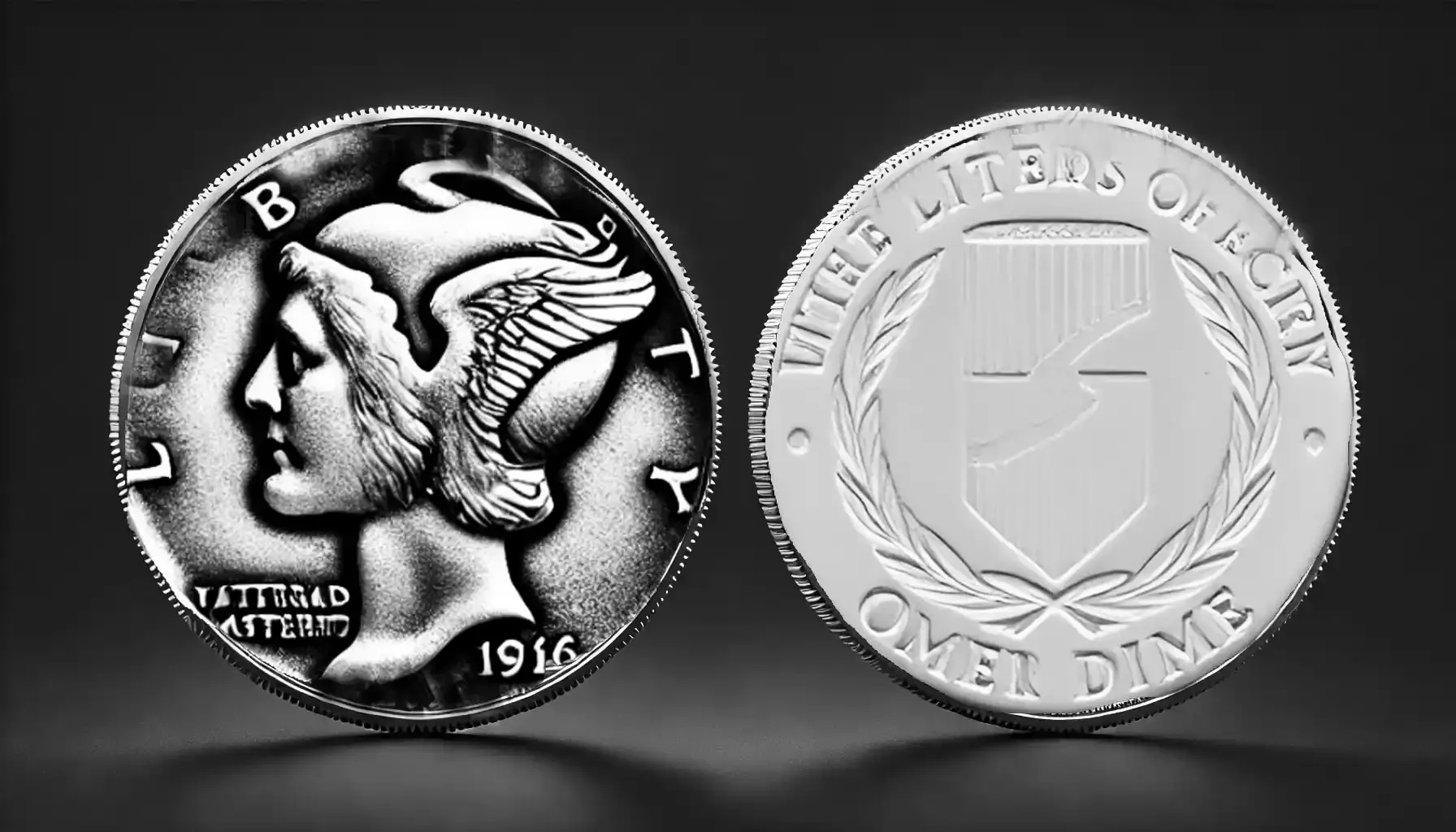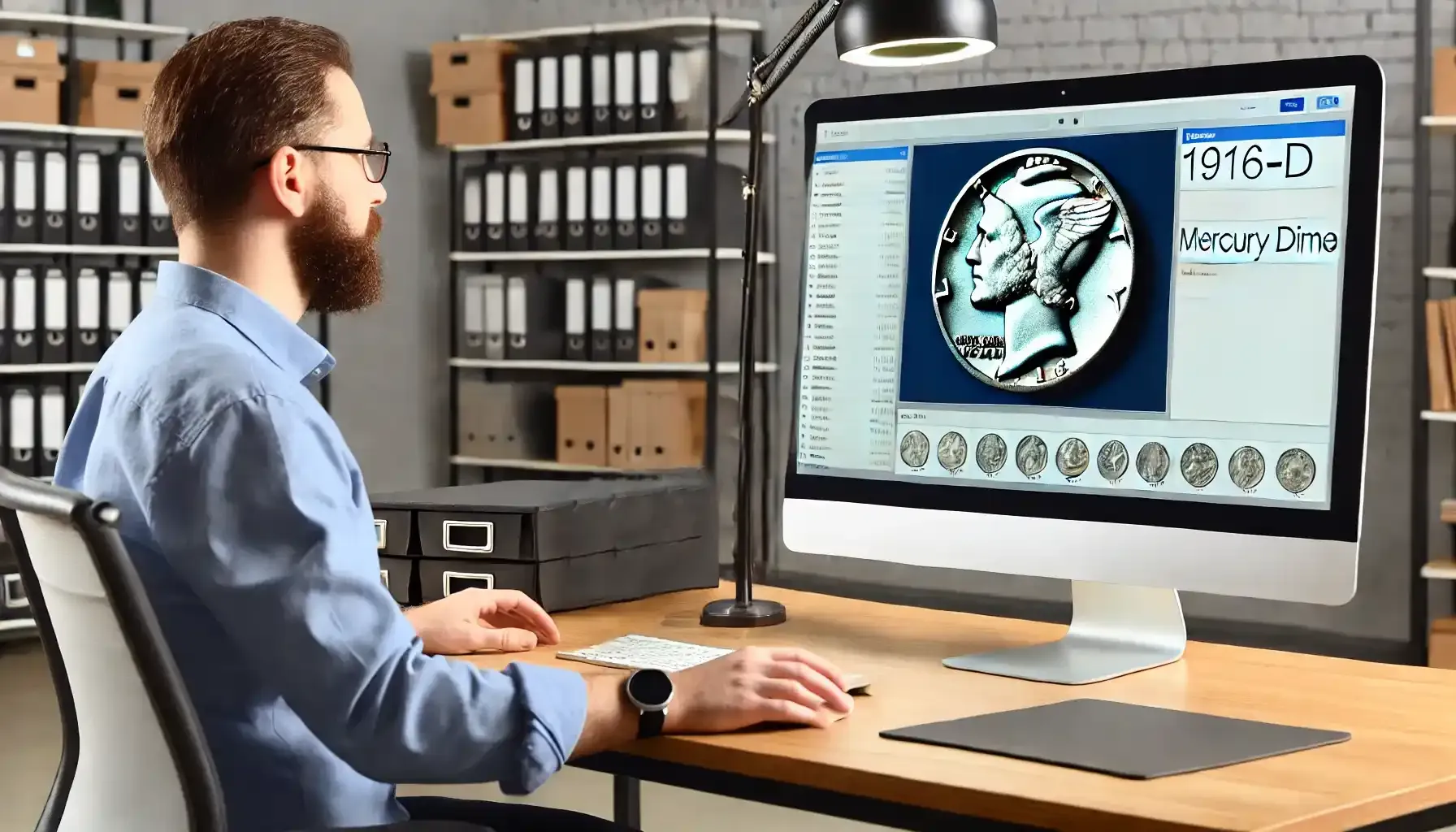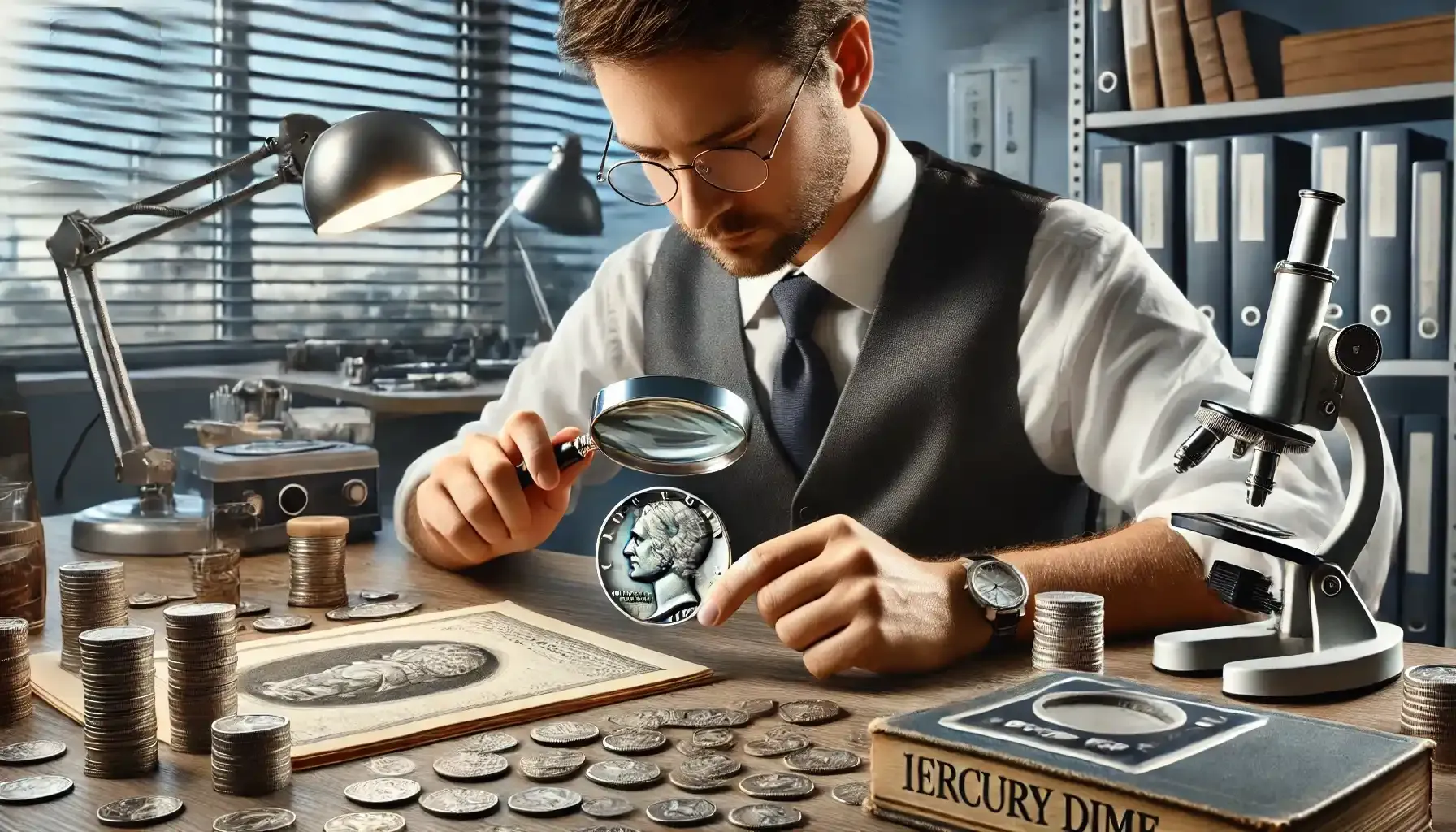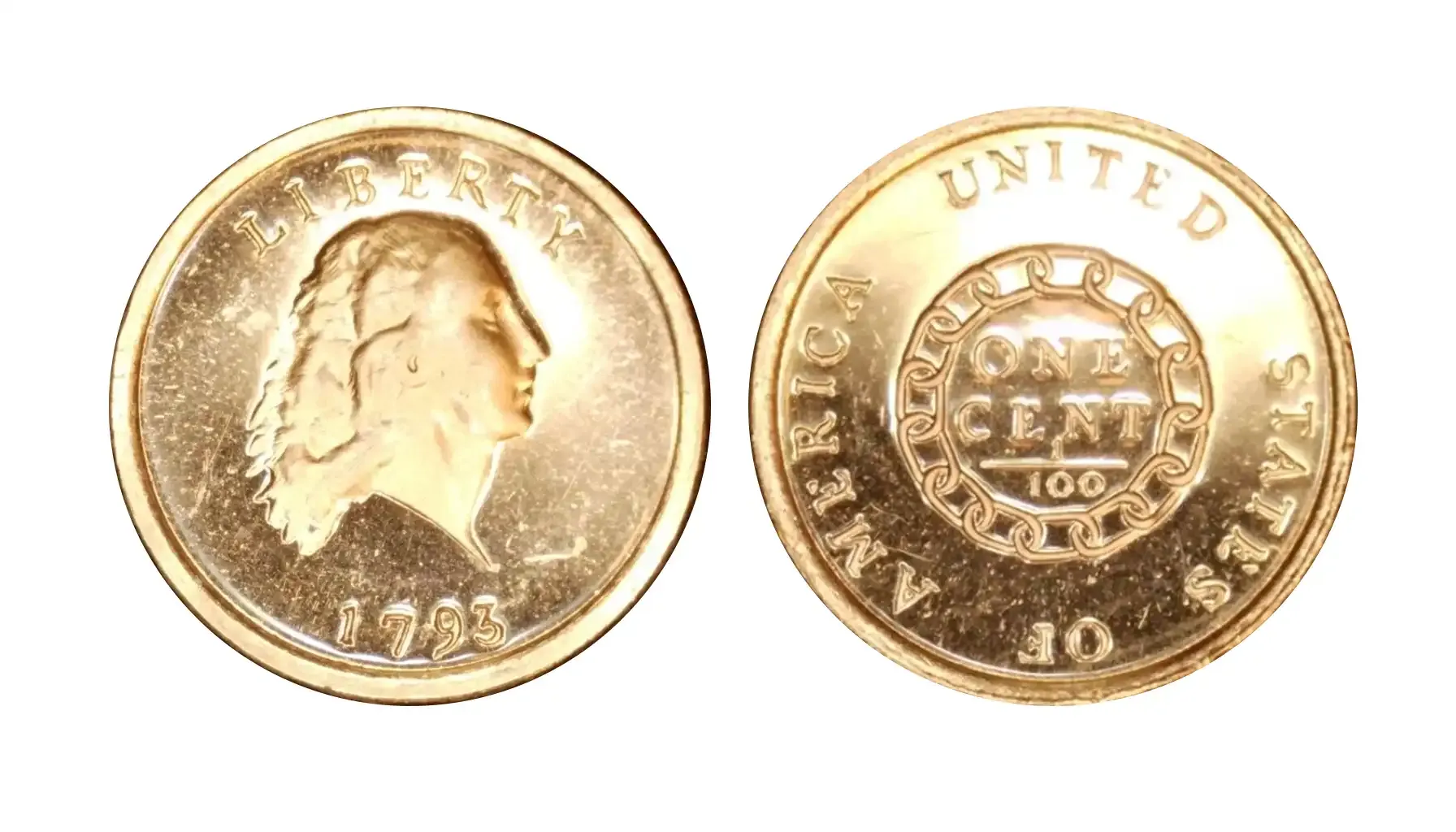Contents:
Do you know something about the 1916 D Mercury dime value? Its rarity, history and high price in the market make it a true legend. But along with the desire to own this rare specimen comes the risk of coming across a fake 1916-D dime, as this coin is one of the most frequently counterfeited.
Let's find out how much is a 1916 dime worth, what makes the coin so special, go into the details of the issue and learn how the AI coin identifier can be useful to accurately determine the 1916 dime coin value.

1916 Dimes Overview for Collectors
Specs | Description |
Design | Obverse: A head of Liberty wearing a winged helmet symbolizing freedom of thought. The inscription “LIBERTY” covers the top edge of the coin and below the head is the motto “IN GOD WE TRUST” and the year of issue. |
Reverse: A fascium, i.e. a bundle of rods with an axe (an ancient Roman symbol of power and unity) wrapped around an olive branch (a symbol of peace). Next to the rods is the famous motto “E PLURIBUS UNUM”. Around the circumference are the inscriptions “UNITED STATES OF AMERICA” and “ONE DIME”. | |
Diameter | 17.9 mm |
Weight | 2.5 g |
Metal | 90% silver (1916 silver Mercury dime), 10% copper |
Minting Figures | 22,180,080 for Philadelphia (1916 Mercury dime no mint mark) |
10, 450, 000 for San Francisco (1916-S Mercury dime) | |
264,000 for Denver (1916 D Mercury dime mintage) |
Its use in circulation continued without incident. The design had no problems with striking design (like the everlasting Canadian coins of Queen Elizabeth).
1916-D Mercury Dime Mint Mark Positions
First of all, 1916 is a special date for the piece, which is considered a “key date” in the history of this coin. By the term “key date” numismatists mean the year of issue of a coin that is particularly valuable or rare compared to other issues.
Issued in Denver in 1916, the “D” is one of the rarest coins. Its mintage figures are 264,000 pieces. Combined, the low mintage, the difficulty in finding high grade specimens and the constant demand raise its 1916-D Mercury dime worth to impressive sums.
The 1916 Mercury dime D (also known as the Winged Liberty Head) has a very specific mint mark position that is critical for authentication, especially due to the high number of counterfeits.

The "D" mint mark (for the Denver Mint) is located on the reverse (back) of the coin.
Specifically, it is placed:
Near the bottom left of the fasces (the central Roman axe symbol),
Just to the left of the "E" in ONE and above the “E” in DIME,
Close to the rim, but clearly within the wreath design elements.
Additional:
The mint mark is small but sharply defined.
On genuine ones, the mint mark is not repunched, not blurry, and does not touch the fasces or the "E".
The absence of a mint mark means the coin was minted in Philadelphia.
An "S" mint mark indicates San Francisco ( =1916 S Mercury dime value).
1916 Mercury Dime Value
Mint Mark | Good (G-4) | Very Fine (VF-20) | Extremely Fine (EF-40) | About Uncirculated (AU-50) | Mint State (MS-60) | Mint State (MS-65) | Full Bands (FB) MS-65 |
1916 (P) | $4 – $6 | $8 – $12 | $15 – $25 | $30 – $50 | $55 – $75 | $150 – $200 | $300 – $400 |
1916 Dime D Value | $1,000 – $1,500 | $3,000 – $5,000 | $6,500 – $9,000 | $10,000 – $14,000 | $15,000 – $20,000 | $25,000 – $30,000 | $35,000 – $45,000 |
1916 S Dime Value | $5 – $7 | $10 – $20 | $25 – $35 | $40 – $60 | $75 – $100 | $200 – $300 | $450 – $600 |
1916-D Mercury Dime Value Table
Grade | How Much Is a 1916 D Mercury Dime Worth? | Description of a 1916 D Dime Value |
G-4 (Good) | $1,000 – $1,500 | Worn heavily, date and mint mark still visible. Highly sought after. |
VG-8 (Very Good) | $1,800 – $2,600 | More visible details, but still heavily worn. |
F-12 (Fine) | $2,800 – $3,800 | Moderate wear with partial detail in hair and bands. |
VF-20 (Very Fine) | $3,800 – $5,000 | Good definition in hair, wings, and fasces; moderate even wear. |
EF-40 (Ext. Fine) | $6,500 – $9,000 | Light wear on highest points; nearly complete detail. |
AU-50 (Almost Unc.) | $10,000 – $14,000 | Trace of wear only; excellent eye appeal. |
MS-60 (Mint State) | $15,000 – $20,000 | Uncirculated, but may have bag marks or weaker strike. |
MS-63 (Choice MS) | $22,000 – $27,000 | Sharper strike, fewer marks; well-struck coin with nice luster. |
MS-65 (Gem MS) | $25,000 – $30,000 | Strong eye appeal, clean fields, good luster. |
MS-65 FB (Full Bands) | $35,000 – $45,000 | Top-tier: fully struck horizontal bands on the fasces, highly coveted. |
MS-67 FB | $80,000 – $120,000+ | Ultra-rare, registry-grade coins. Record auction sales exceed $150,000. |
What Are FB (Full Bands)?
FB refers to the sharpness and completeness of the horizontal bands on the fasces on the reverse.
On the reverse side:
There are two sets of horizontal bands wrapped around the vertical fasces.
For a dime to qualify as Full Bands (FB), each of these bands must be fully separated and distinctly struck.
No flattening or merging of the lines is allowed in the middle section.

Feature | Description |
Strike Quality | FB indicates a strong, precise strike, showing the die fully imprinted the coin. |
Rarity | Full Bands are harder to find, especially on earlier dates like 1916-D. |
Value Boost | FB coins can double or triple in value vs. non-FB coins in the same grade. |
Certification | Only certified coins from PCGS or NGC with FB/FT designation are trusted in the market, and may have a high 1916 Liberty dime value. |
1916 D Mercury Dime for Sale
APMEX – G-4 grade, ~$1,345
Liz Coggan – AU58 (NGC) for ~$12,995; AU58 FB (PCGS) for ~$14,995 for a 1916-D Mercury dime for sale
eBay – Wide range: $793 to $13,500+ (certified and raw options)
ProCoins – Various raw grades, value of 1916 D Mercury dime varies
GreatCollections – Auction site with graded coins (check listings for 1916 D dime for sale)
1916-D Mercury Dime Counterfeit Detection
Check the mint mark
The mark should look clear and be slightly recessed into the surface of the coin, not overlaid or poorly applied. If the mark has an indistinct shape, the letter is too small or, on the contrary, too large compared to the original, you have probably encountered a fake that will not have a high Mercury dime 1916 D value.
Metal hue and processing signs
Counterfeit coins often have an uneven hue around the “D” sign. Pay attention if the letter appears too bright or dark compared to the rest of the coin. Moreover, check whether you have a 1916 SILVER dime.
The Coin ID Scanner app can be a reliable aid in identifying any coin, even the 1942 Half Dollar coin. You can quickly identify the main characteristics of the coin and check the rare specimen database, and even verify the 1916 dime value.

Additional: Mercury Head Dime Collection 1916 to 1945 Value
The complete collection (1916–1945) contains 77 coins (including all regular-issue dates and mint marks). Its total value depends heavily on:
Key Dates: Especially 1916-D, 1921, and 1921-D.
Mint Marks: D (Denver), S (San Francisco), no mark (Philadelphia).
Condition: Grading from Good (G-4) to Mint State (MS-67+).
Full Bands (FB) designation, which significantly raises premium in Mint State.



